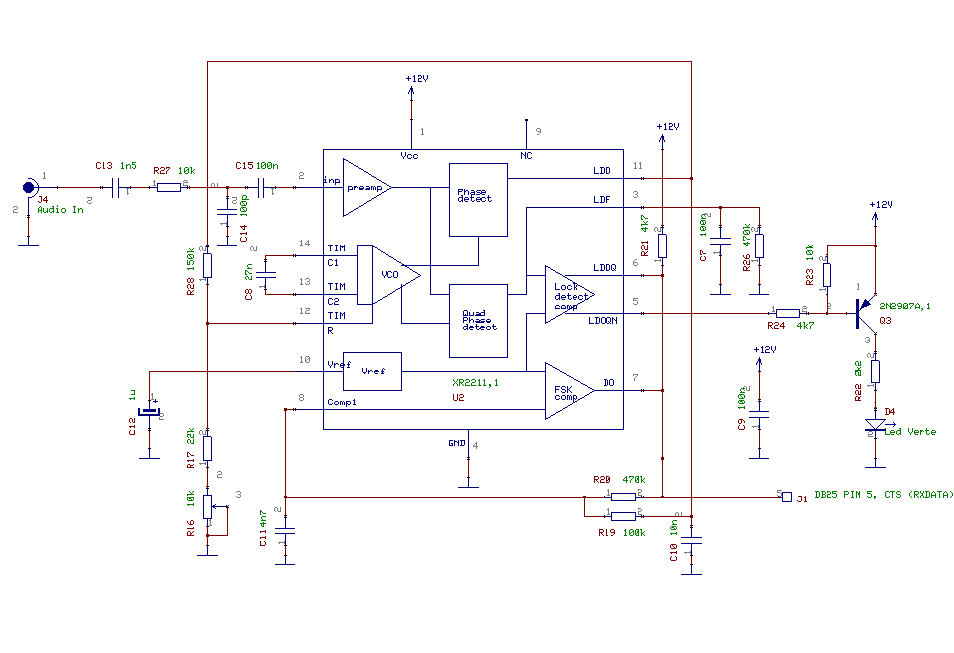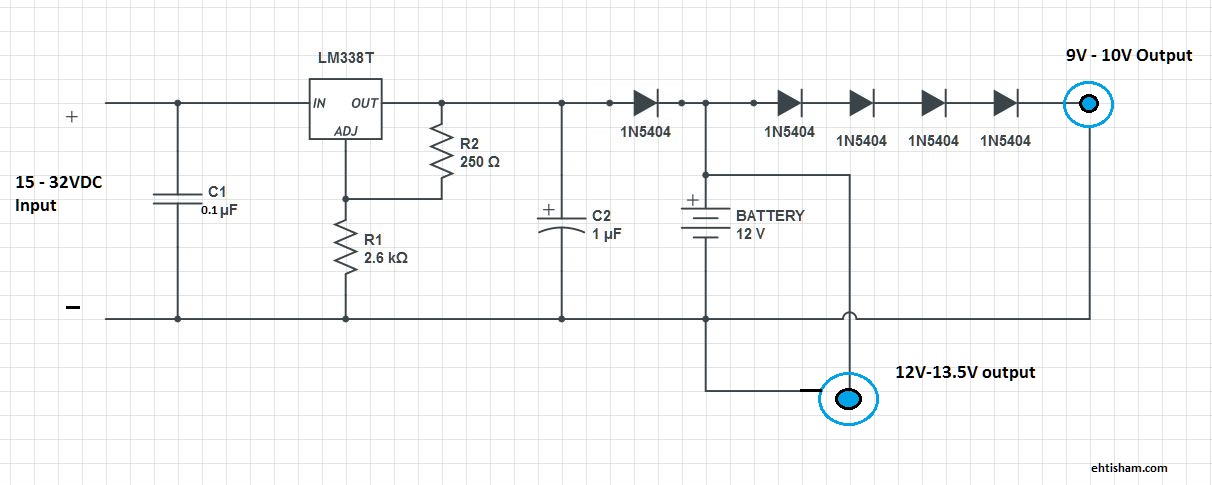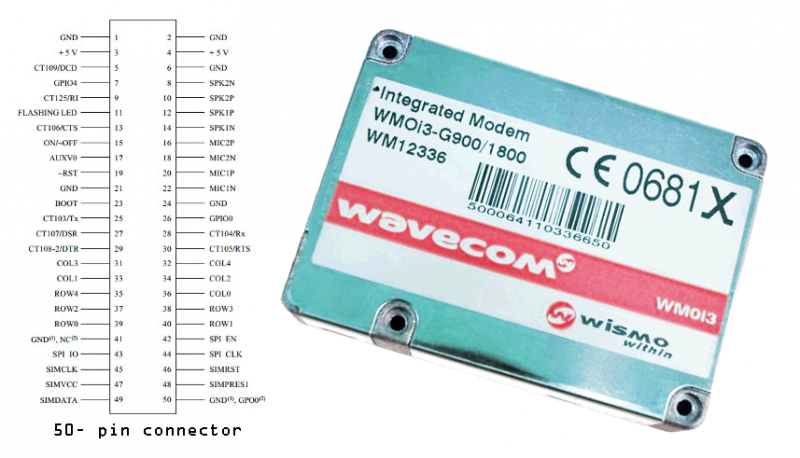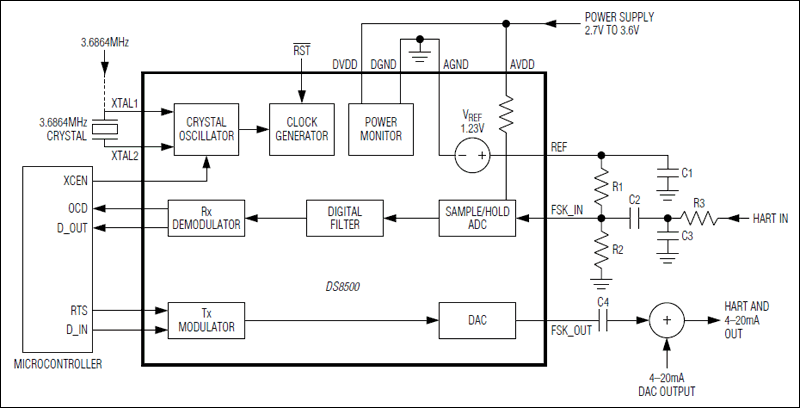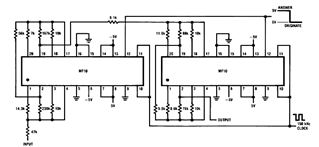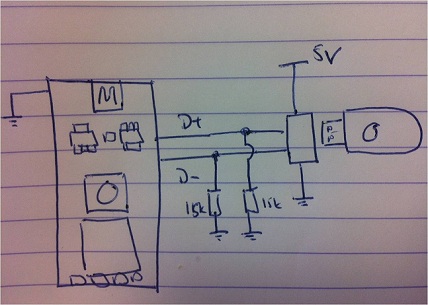
KD2BD Pacsat Modem
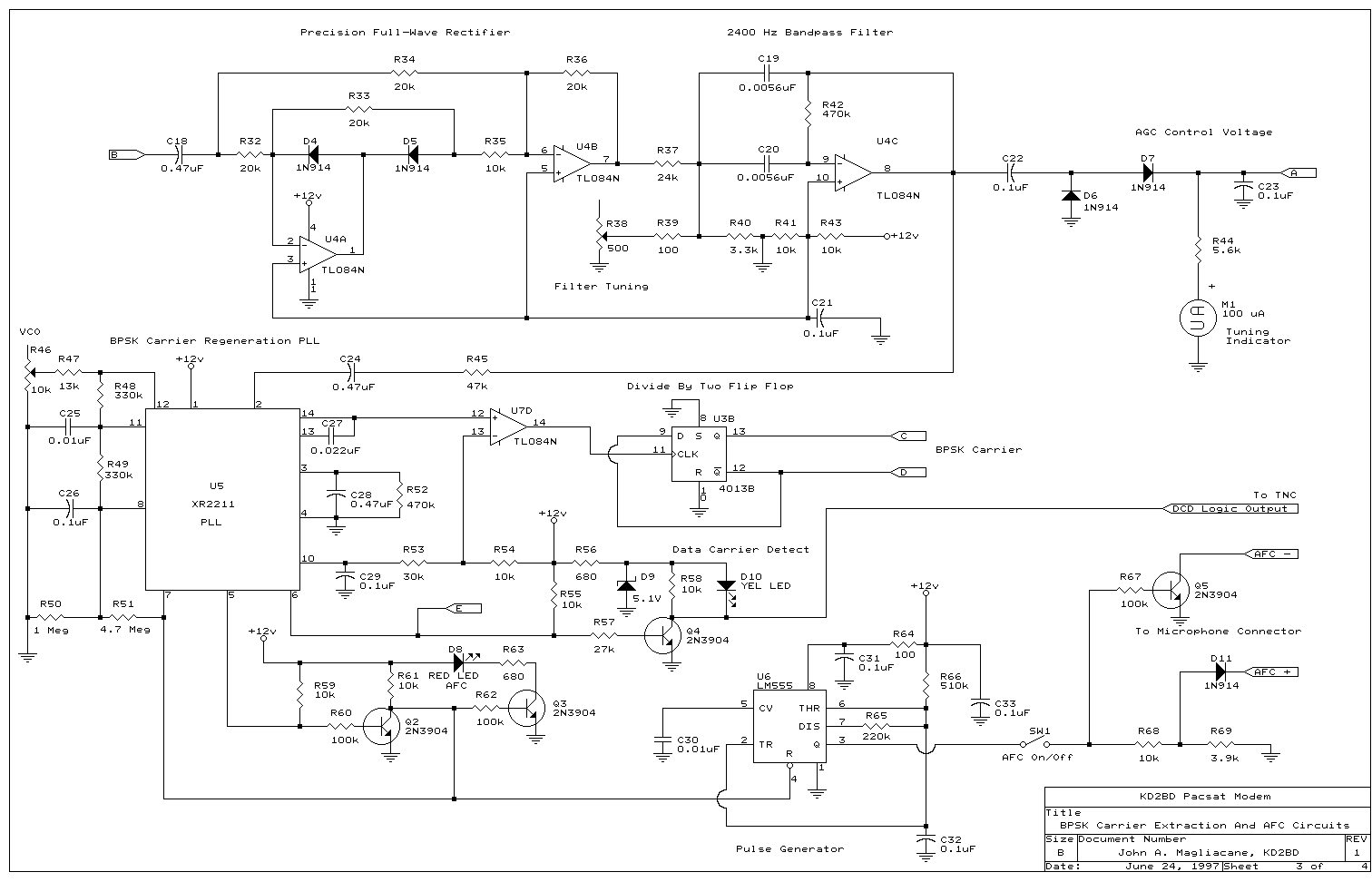
The KD2BD Pacsat Modem is a cost-effective, high-performance 1200 bps BPSK modem designed to connect a packet radio terminal node controller (TNC) with an amateur satellite ground station, enabling full-duplex access to the 1200 baud "Pacsat" constellation of amateur satellites. The modem features a 1200 bps BPSK demodulator for receiving Pacsat transmissions and a Bi-Phase Manchester encoder for generating uplink signals. It employs coherent phase detection and correlation decoding techniques, allowing it to demodulate BPSK signals even in low signal conditions. An Automatic Gain Control (AGC) system compensates for variations in signal strength, while an Automatic Frequency Control (AFC) adjusts the downlink receiver for Doppler shift during satellite passes. The demodulator is highly sensitive, capable of locking onto BPSK signals that are barely audible above noise. The modulator generates low-distortion 1200 bps Bi-Phase Manchester code suitable for Manchester encoded FSK with a standard 2-meter FM voice transmitter or BPSK with an SSB transmitter. Originally designed to interface with an MFJ 1270B TNC and a Yaesu FT-726R multi-mode VHF/UHF transceiver, suitable modifications can enable operation with other TNCs and ground station equipment. Amateur satellites, known as OSCARs, have incorporated packet radio for over 30 years, with recent designs utilizing the AX.25 protocol for communication with ground stations. Some satellites, like DOVE-OSCAR-17, transmit telemetry via beacon transmitters using this protocol, while others offer full duplex communication links through transponders. Pacsats are amateur satellites featuring packet radio store-and-forward transponders. Current satellites transmitting 1200 bps NRZI, HDLC, AX.25 protocol-compatible packet radio signals include PACSAT-OSCAR-16, DOVE-OSCAR-17, WEBERSAT-OSCAR-18, LUSAT-OSCAR-19, FUJI-OSCAR-20, ITAMSAT-OSCAR-26, and FUJI-OSCAR-29. Only DOVE-OSCAR-17 employs audio frequency shift keying (AFSK) modulation on a narrow-band FM carrier, compatible with terrestrial VHF-FM and UHF-FM packet radio communications, while the others utilize binary phase shift keying (BPSK). Despite the popularity of AFSK-FM for 1200 baud packet radio, its demodulation methods often underperform. Research indicates that a Tucson Amateur Packet Radio (TAPR) TNC-1 internal Bell 202 modem requires a minimum signal level of 25 dB of FM receiver quieting (25 dBQ) for reliable communications, a challenging threshold for micro satellites on UHF frequencies with limited transmitter power. Consequently, BPSK was chosen for 1200 bps Pacsat downlink transmissions. This modulation technique, combined with low binary data rates, has enabled interplanetary space probes to relay large data volumes to Earth from significant distances with minimal power. BPSK provides a 6 dB signal-to-noise ratio advantage over coherent CW modulation, which has long been regarded as the optimal weak signal communication mode.
The KD2BD Pacsat Modem operates through a series of integrated circuits and components that facilitate both modulation and demodulation processes. The design typically incorporates a microcontroller for managing signal processing tasks, interfacing with the TNC, and controlling the AGC and AFC systems. The BPSK demodulator employs a coherent detector that compares the incoming signal phase against a reference signal, allowing it to recover the transmitted data even in the presence of noise. The demodulator’s sensitivity is enhanced by the correlation decoding techniques, which improve the ability to distinguish between signal and noise.
The modulator section of the modem utilizes a digital-to-analog converter (DAC) to generate the necessary Manchester encoding for the uplink signal. This section ensures that the output signal maintains low distortion levels, which is critical for effective transmission over amateur satellite frequencies. The interface with the TNC is designed to be flexible, accommodating various signaling protocols and ensuring compatibility with different amateur radio equipment.
In summary, the KD2BD Pacsat Modem represents a sophisticated solution for amateur radio enthusiasts seeking reliable communication with satellite systems. Its robust design, advanced modulation techniques, and adaptability to various equipment make it an essential tool for engaging with the growing network of amateur satellites.The KD2BD Pacsat Modem is a low cost, high performance 1200 bps BPSK modem designed to interface between a packet radio terminal node controller (TNC) and an amateur satellite ground station, and allows full-duplex access to the 1200 baud "Pacsat" constellation of amateur satellites. The KD2BD Pacsat Modem consists of a 1200 bit per second BPSK de modulator for receiving Pacsat transmissions, and a Bi-Phase Manchester encoder for generating Pacsat uplink signals. The demodulator uses coherent phase detection and correlation decoding techniques that are capable of demodulating BPSK signals well into the noise level.
It also includes an Automatic Gain Control (AGC) system to compensate for signal strength variations, and an Automatic Frequency Control (AFC) for tuning the downlink receiver in response to Doppler shift during a satellite pass. The demodulator is very sensitive, and is capable of locking into BPSK signals so weak they are barely audible above the ambient receiver noise.
The modulator produces low-distortion 1200 bit per second Bi-Phase Manchester code suitable for generating Manchester encoded FSK when used with a standard 2-meter FM voice transmitter, or BPSK when used with an SSB transmitter. The KD2BD Pacsat Modem was originally designed to interface with an MFJ 1270B terminal node controller (TNC-2 clone), and a Yaesu FT-726R multi-mode VHF/UHF communications transceiver.
Suitable interfacing modifications should allow proper modem operation with other TNCs and ground station radio equipment. The specifics for doing so are left to the expertise of the reader. Orbital Satellites Carrying Amateur Radio (OSCARs) have been a part of amateur radio for over 30 years.
With the growing popularity of terrestrial packet radio communications on the amateur bands, recent OSCAR satellites have been designed to make use of the AX. 25 protocol in their communications with ground stations. Some satellites, such as DOVE-OSCAR-17, use the protocol for the transmission of telemetry information through beacon transmitters, while others use the protocol to provide full duplex communication links with the satellites` transponders.
Amateur satellites containing packet radio store-and-forward transponders are known as "Pacsats". The current roster of satellites making 1200 bps NRZI, HDLC, AX. 25 protocol compatible packet radio transmissions on amateur frequencies includes PACSAT-OSCAR-16, DOVE-OSCAR-17, WEBERSAT-OSCAR-18, LUSAT-OSCAR-19, FUJI-OSCAR-20, ITAMSAT-OSCAR-26, and FUJI-OSCAR-29. Of these satellites, only DOVE-OSCAR-17 uses audio frequency shift keying (AFSK) modulation on a narrow-band FM carrier which is compatible with existing terrestrial VHF-FM and UHF-FM packet radio communications.
The remaining satellites use binary phase shift keying (BPSK) modulation. As popular and as widespread as the AFSK-FM method of transmission is for 1200 baud packet radio communications, AFSK-FM and its popular demodulation methods yield a level of performance that leaves a lot to be desired. Steve Goode, K9NG, has shown through extensive testing that a Tucson Amateur Packet Radio (TAPR) TNC-1 internal Bell 202 modem required a signal level that produced at least 25 dB of FM receiver quieting (25 dBQ) for high communications reliability.
Since this is a difficult signal level to achieve from micro satellites operating on UHF frequencies with only several watts of transmitter power, a more robust Binary Phase Shift Keying (BPSK) emission was selected for use by 1200 bps Pacsat downlink transmitters. Coupled with low binary data rates, Binary Phase Shift Keying has allowed interplanetary space probes to transmit vast quantities of data to ground stations on Earth from great distances with low transmitter power.
BPSK offers a 6 dB signal-to-noise ratio advantage over coherent CW (CCW) modulation. CCW has long been considered to be the premium weak signal communications mode availa 🔗 External reference
The KD2BD Pacsat Modem operates through a series of integrated circuits and components that facilitate both modulation and demodulation processes. The design typically incorporates a microcontroller for managing signal processing tasks, interfacing with the TNC, and controlling the AGC and AFC systems. The BPSK demodulator employs a coherent detector that compares the incoming signal phase against a reference signal, allowing it to recover the transmitted data even in the presence of noise. The demodulator’s sensitivity is enhanced by the correlation decoding techniques, which improve the ability to distinguish between signal and noise.
The modulator section of the modem utilizes a digital-to-analog converter (DAC) to generate the necessary Manchester encoding for the uplink signal. This section ensures that the output signal maintains low distortion levels, which is critical for effective transmission over amateur satellite frequencies. The interface with the TNC is designed to be flexible, accommodating various signaling protocols and ensuring compatibility with different amateur radio equipment.
In summary, the KD2BD Pacsat Modem represents a sophisticated solution for amateur radio enthusiasts seeking reliable communication with satellite systems. Its robust design, advanced modulation techniques, and adaptability to various equipment make it an essential tool for engaging with the growing network of amateur satellites.The KD2BD Pacsat Modem is a low cost, high performance 1200 bps BPSK modem designed to interface between a packet radio terminal node controller (TNC) and an amateur satellite ground station, and allows full-duplex access to the 1200 baud "Pacsat" constellation of amateur satellites. The KD2BD Pacsat Modem consists of a 1200 bit per second BPSK de modulator for receiving Pacsat transmissions, and a Bi-Phase Manchester encoder for generating Pacsat uplink signals. The demodulator uses coherent phase detection and correlation decoding techniques that are capable of demodulating BPSK signals well into the noise level.
It also includes an Automatic Gain Control (AGC) system to compensate for signal strength variations, and an Automatic Frequency Control (AFC) for tuning the downlink receiver in response to Doppler shift during a satellite pass. The demodulator is very sensitive, and is capable of locking into BPSK signals so weak they are barely audible above the ambient receiver noise.
The modulator produces low-distortion 1200 bit per second Bi-Phase Manchester code suitable for generating Manchester encoded FSK when used with a standard 2-meter FM voice transmitter, or BPSK when used with an SSB transmitter. The KD2BD Pacsat Modem was originally designed to interface with an MFJ 1270B terminal node controller (TNC-2 clone), and a Yaesu FT-726R multi-mode VHF/UHF communications transceiver.
Suitable interfacing modifications should allow proper modem operation with other TNCs and ground station radio equipment. The specifics for doing so are left to the expertise of the reader. Orbital Satellites Carrying Amateur Radio (OSCARs) have been a part of amateur radio for over 30 years.
With the growing popularity of terrestrial packet radio communications on the amateur bands, recent OSCAR satellites have been designed to make use of the AX. 25 protocol in their communications with ground stations. Some satellites, such as DOVE-OSCAR-17, use the protocol for the transmission of telemetry information through beacon transmitters, while others use the protocol to provide full duplex communication links with the satellites` transponders.
Amateur satellites containing packet radio store-and-forward transponders are known as "Pacsats". The current roster of satellites making 1200 bps NRZI, HDLC, AX. 25 protocol compatible packet radio transmissions on amateur frequencies includes PACSAT-OSCAR-16, DOVE-OSCAR-17, WEBERSAT-OSCAR-18, LUSAT-OSCAR-19, FUJI-OSCAR-20, ITAMSAT-OSCAR-26, and FUJI-OSCAR-29. Of these satellites, only DOVE-OSCAR-17 uses audio frequency shift keying (AFSK) modulation on a narrow-band FM carrier which is compatible with existing terrestrial VHF-FM and UHF-FM packet radio communications.
The remaining satellites use binary phase shift keying (BPSK) modulation. As popular and as widespread as the AFSK-FM method of transmission is for 1200 baud packet radio communications, AFSK-FM and its popular demodulation methods yield a level of performance that leaves a lot to be desired. Steve Goode, K9NG, has shown through extensive testing that a Tucson Amateur Packet Radio (TAPR) TNC-1 internal Bell 202 modem required a signal level that produced at least 25 dB of FM receiver quieting (25 dBQ) for high communications reliability.
Since this is a difficult signal level to achieve from micro satellites operating on UHF frequencies with only several watts of transmitter power, a more robust Binary Phase Shift Keying (BPSK) emission was selected for use by 1200 bps Pacsat downlink transmitters. Coupled with low binary data rates, Binary Phase Shift Keying has allowed interplanetary space probes to transmit vast quantities of data to ground stations on Earth from great distances with low transmitter power.
BPSK offers a 6 dB signal-to-noise ratio advantage over coherent CW (CCW) modulation. CCW has long been considered to be the premium weak signal communications mode availa 🔗 External reference
